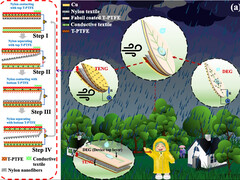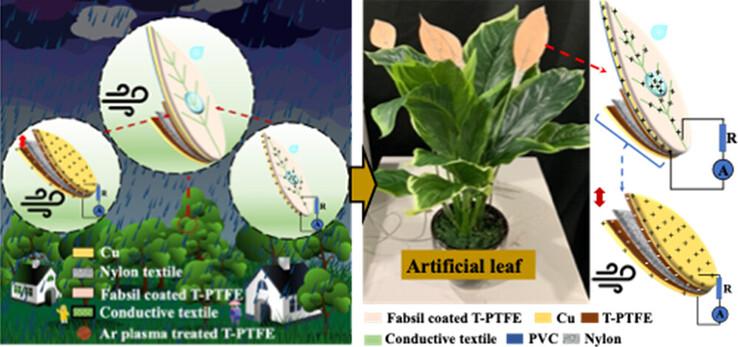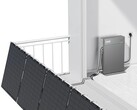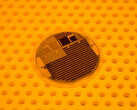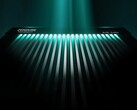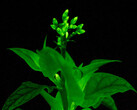Triboelectricity is well known. It makes children's hair stand on end in bouncy castles. Depending on the weather, this can give you a little electric shock on the car door. With a balloon and a woolen sweater, it also comes out.
So why not use the effect to generate electricity? After all, only familiar materials such as Teflon and artificial fibers are needed. A copper electrode is also needed. The necessary conditions such as wind or rain are almost always present.
Admittedly: A little plasma from argon was probably also necessary to obtain the appropriate surface properties. In addition, some electronics are likely to be added to make the electricity generated usable on a larger scale.
In the experiment presented by researchers from the Universities of Beijing and Glasgow, several of these nanogenerators were added to a houseplant. The respective area was only about one square inch.
Exposed to light wind and artificial rain, they were able to light up 10 LEDs. One square meter (eleven square feet) of this should be able to achieve an output of 11 watts with the setup presented. That would be the typical charging current for a cell phone.
The aim is to create large, artificial structures that ultimately resemble trees or can even be integrated into plants. Subsequently, slight movements are sufficient to generate a usable amount of electricity.
This is still an experiment that demonstrates basic feasibility. Production using plasma is complex, even if it increases efficiency by a factor of 50 according to the study.
In addition, substances such as Telfon are regarded as eternal chemicals for which replacements should be sought sooner rather than later. Copper and nylon, on the other hand, are unsuspicious and inexpensive.
Finally, soft and movable generators in mini format open up additional possibilities. The idea of clothing can also be found in the study. This converts your own movement into electricity that charges your smartphone while you are on the way.




